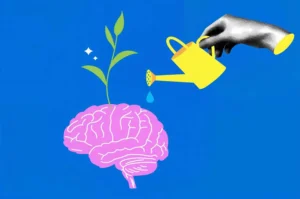How to Get Bounce Back: Mastering Resilience in Life’s Challenging Moments
Life is unpredictable, with obstacles, setbacks, and unexpected challenges. The ability to bounce back—to recover, adapt, and grow stronger after facing difficulties—is not just a skill but a crucial life strategy. This comprehensive guide will explore the art and science of resilience, providing practical techniques, psychological insights, and actionable strategies to help you navigate life’s ups and downs with grace, strength, and determination.
Understanding Resilience: What Does “Bouncing Back” Really Mean?
Resilience is more than just surviving difficult situations. It’s about thriving despite them. At its core, resilience is the psychological capacity to adapt to stress and adversity, bounce back from challenges, and continue moving forward with hope and purpose.
The Science Behind Resilience
Psychological research has consistently shown that resilience is not an innate trait but a skill that can be developed and strengthened. Neuroplasticity—the brain’s ability to form new neural connections—means we can rewire our brains to become more resilient through intentional practices and mindset shifts.
Key Components of Personal Resilience
1. Emotional Intelligence and Self-Awareness
Developing emotional intelligence is fundamental to bouncing back. This involves:
- Recognizing and acknowledging your emotions without judgment
- Understanding the root causes of your emotional responses
- Learning to regulate and process emotions effectively
- Developing empathy for yourself and others
2. Cognitive Flexibility
Cognitive flexibility is adapting your thinking in response to changing circumstances. It involves:
- Challenging negative thought patterns
- Reframing challenges as opportunities for growth
- Maintaining a balanced and realistic perspective
- Avoiding catastrophic thinking
3. Building a Strong Support Network
No one recovers alone. A robust support system is crucial for resilience:
- Cultivate meaningful relationships
- Communicate openly with trusted friends and family
- Seek professional support when needed
- Join support groups or communities with shared experiences
Practical Strategies for Getting Your Bounce Back
Mental Strategies
Mindset Reconstruction
- Practice positive self-talk
- Challenge and replace self-limiting beliefs
- Develop a growth mindset that views challenges as learning opportunities
Stress Management Techniques
- Regular meditation and mindfulness practices
- Deep breathing exercises
- Journaling to process emotions and experiences
- Cognitive behavioral techniques for managing anxiety and stress
Physical Strategies
Holistic Health Approaches
- Maintain a consistent sleep schedule
- Engage in regular physical exercise
- Eat a balanced, nutritious diet
- Practice regular self-care routines
Energy Restoration
- Learn to recognize and manage energy levels
- Implement strategic rest and recovery periods
- Balance high-intensity activities with recovery time
Emotional Healing Strategies
Emotional Processing
- Allow yourself to feel and process emotions completely
- Practice self-compassion
- Develop healthy emotional release mechanisms
- Learn from past experiences without dwelling on them
Building Emotional Resilience
- Cultivate optimism
- Practice gratitude
- Develop emotional regulation skills
- Create personal rituals for an emotional reset
Overcoming Specific Life Challenges
Professional Setbacks
- View career challenges as opportunities for growth
- Develop a continuous learning mindset
- Network and seek mentorship
- Stay adaptable in changing professional landscapes
Personal Relationship Difficulties
- Communicate openly and honestly
- Set healthy boundaries
- Practice forgiveness (of self and others)
- Invest in personal growth and self-development
Financial Challenges
- Create realistic and flexible financial plans
- Develop multiple income streams
- Learn financial management skills
- Maintain a long-term perspective
Advanced Resilience Techniques
Post-Traumatic Growth
Research shows that some individuals recover from traumatic experiences and grow and become stronger. This involves:
- Finding meaning in challenging experiences
- Developing new perspectives
- Discovering personal strengths
- Transforming pain into purpose
Continuous Personal Development
- Commit to lifelong learning
- Embrace vulnerability
- Regularly step out of your comfort zone
- Cultivate curiosity and adaptability
Creating a Personalized Bounce Back Plan
Self-Assessment
- Identify your current resilience strengths
- Recognize areas for improvement
- Set realistic and measurable goals
- Create a structured plan for personal development
Implementation Strategies
- Break goals into small, manageable steps
- Track progress consistently
- Celebrate small victories
- Stay flexible and adjust your approach as needed
Common Obstacles and How to Overcome Them
Dealing with Self-Doubt
- Challenge negative self-talk
- Build self-confidence through small achievements
- Seek constructive feedback
- Practice positive affirmations
Managing Fear of Failure
- Reframe failure as a learning opportunity
- Develop an experimental mindset
- Focus on process over outcome
- Build emotional tolerance for uncertainty
Technological and Modern Resilience Tools
Digital Resources
- Mental health and meditation apps
- Online therapy platforms
- Personal development courses
- Community support forums
Tracking and Measurement
- Use digital tools to monitor emotional and mental health
- Leverage technology for goal setting and tracking
- Engage with virtual support communities
Conclusion: Your Resilience Journey
Bouncing back is not about falling but rising every time you fall. Resilience is a skill that can be learned, practiced, and mastered. By implementing the strategies outlined in this guide, you can develop the psychological flexibility and strength to navigate life’s challenges with confidence and grace.
Remember, resilience is not a destination but a continuous journey of growth, learning, and self-discovery. Embrace the process, be patient with yourself, and trust in your capacity to overcome and thrive.
Final Thoughts
- You are stronger than you think
- Every challenge is an opportunity for growth
- Your potential for resilience is limitless
Take the first step today. Your bounce-back starts now.
Read Also:
What to eat to have a sharp brain like a computer
ऑटिज़्म के मामले बढ़ रहे हैं: जानिए इसके पीछे की वजहें
Frequently Asked Questions (FAQ)
Q1: What exactly is resilience?
Resilience is the ability to mentally and emotionally recover from challenges, setbacks, or traumatic experiences. It’s about adapting to difficult situations, learning from them, and continuing to move forward with strength and optimism.
Q2: Are some people naturally more resilient than others?
While some individuals may have innate personality traits that support resilience, it’s primarily a skill that can be learned and developed. Resilience is not fixed—it can be cultivated through practice, intentional strategies, and personal growth.
Q3: How long does it take to build resilience?
Building resilience is an ongoing process. There’s no set timeline, as it depends on individual experiences, personal commitment, and the specific challenges faced. Consistent practice of resilience techniques can lead to gradual improvements over weeks, months, and years.
Q4: Can resilience help with mental health issues?
Resilience strategies can be beneficial for managing stress, anxiety, and mild depression. However, they are not a substitute for professional mental health treatment. If you’re experiencing significant mental health challenges, it’s crucial to consult a qualified mental health professional.
Q5: What are the first steps to developing resilience?
Key first steps include:
- Practicing self-awareness
- Developing a growth mindset
- Building a supportive network
- Learning stress management techniques
- Cultivating emotional intelligence
Q6: How can I tell if I’m becoming more resilient?
Signs of increased resilience include:
- Better emotional regulation
- Improved ability to handle stress
- A more positive outlook on challenges
- Faster recovery from setbacks
- Increased self-confidence
- Greater adaptability
Q7: Are there any risks in trying to build resilience?
The primary risks involve unrealistic expectations or using resilience as a way to suppress emotions. Healthy resilience involves acknowledging and processing emotions, not ignoring them. Always approach resilience-building with self-compassion and patience.
Q8: Can resilience be learned at any age?
Absolutely. Resilience is a skill that can be developed throughout life. While it may be easier to build resilience habits earlier, adults of any age can significantly improve their resilience through dedicated practice and learning.
Q9: What’s the difference between resilience and just “toughing it out”?
Resilience is not about suppressing emotions or ignoring challenges. It’s about:
- Acknowledging difficulties
- Processing emotions
- Learning from experiences
- Adapting and growing
“Toughing it out” often involves denial or suppression, which can be harmful in the long term.
Q10: How can technology help in building resilience?
Technology offers various tools:
- Mental health apps
- Online therapy platforms
- Meditation and mindfulness apps
- Goal-tracking applications
- Virtual support communities
Q11: What if I fail at building resilience?
Resilience itself is about understanding that setbacks are part of the learning process. If certain strategies don’t work, it’s an opportunity to:
- Reflect on what didn’t work
- Adjust your approach
- Seek additional support or guidance
Q12: Is professional help necessary for building resilience?
While many people can develop resilience independently, professional guidance can be incredibly beneficial. Therapists, counselors, and coaches can provide personalized strategies and support tailored to your specific needs.
Final Resilience Reminder
Remember, building resilience is a personal journey. Be patient with yourself, celebrate small victories, and understand that growth is a continuous process.









